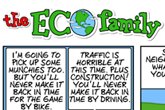- Home
- Comics
- Green Blog
-
Resources
Other Resources
-
Connect
Organic Gardening News
Felix Gillet Institute Trees
Categories: Organic Gardening
What's a Wheel Hoe?
Categories: Organic Gardening
Organic Fertilizer Tips
Categories: Organic Gardening
Pages
- « first
- ‹ previous
- 1
- 2
- 3
- 4

















